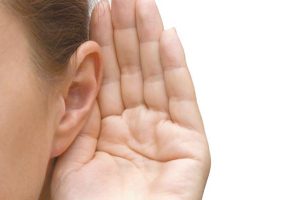February 1, 2024
Ask the Audiologist
Evolution in Hearing Aid Technology
 By Shelby Garrison, Au.D.
By Shelby Garrison, Au.D.
Audiology Consultants, P.C.
Over the past decade, the landscape of hearing aid technology has undergone a remarkable transformation, revolutionizing the way individuals with hearing loss perceive and interact with sound. The advancements made in the last 5-10 years have not only improved the functionality of hearing aids but have also significantly enhanced the overall user experience.
Connectivity and Wireless Capabilities
Perhaps one of the most groundbreaking advancements in recent years is the integration of wireless connectivity into hearing aids. Bluetooth technology has empowered these devices to directly stream audio from smartphones, TVs, and other devices. Users can seamlessly answer calls, listen to music, and enjoy multimedia without the need for additional accessories, fostering convenience and accessibility in their daily lives.
Artificial Intelligence and Machine Learning
The incorporation of artificial intelligence (AI) and machine learning algorithms has propelled hearing aids into a new realm of adaptability. These devices can now learn from user preferences and adapt to various listening environments, autonomously adjusting settings for an optimized auditory experience. The real-time analysis of sound environments allows for personalized sound processing, catering to individual needs in ever-changing situations.
Rechargeability and Longer Battery Life
The shift towards rechargeable hearing aids has eliminated the hassle of constantly changing disposable batteries. With lithium-ion batteries, these devices offer longer usage on a single charge, not only reducing environmental impact but also providing a cost-effective solution for users.
Design Innovations and Miniaturization
Advancements in miniaturization have led to sleeker, smaller, and more compact, discreet hearing aid designs. Invisible-in-canal (IIC) and completely-in-canal (CIC) models sit deep within the ear canal, offering both cosmetic appeal and improved sound quality. This technological progress has addressed concerns about visibility, promoting user confidence.
Tinnitus Management Features
Many contemporary hearing aids now incorporate built-in tinnitus management features. These functionalities offer relief to individuals experiencing tinnitus by producing soothing sounds or customized therapy programs tailored to alleviate the ringing or buzzing sensations associated with the condition.

Environmental Adaptability
Sophisticated sensors within modern hearing aids can detect various environments and adjust settings accordingly. This adaptability ensures that users experience optimal sound quality whether they are in noisy restaurants, quiet offices, or bustling streets.
Remote Programming and Telehealth Services
The ability for remote programming and adjustments has transformed the user experience. Audiologists can fine-tune hearing aids remotely, and telehealth services enable users to consult with professionals, receive support, and make necessary adjustments without physical appointments, ensuring accessibility and convenience.
Enhanced Binaural Communication
Advancements in technology have facilitated seamless communication between both ears, mimicking natural hearing processes. This bilateral communication enhances localization, clarity, and overall sound quality, significantly improving the user’s listening experience across diverse environments.
These advancements underscore a profound shift in audiology, emphasizing not just functional enhancement but also personalized and immersive auditory experiences. As technology continues to progress, the future holds promising developments aimed at further improving the lives of individuals with hearing loss, solidifying the pivotal role of innovation in the evolution of hearing aid technology.
Shelby Garrison is an audiologist at Audiology Consultants, P.C. For more information, visit audiologyconsultants.com.
Filed Under: Health & Wellness, News, Technology
Trackback URL: https://www.50pluslife.com/2024/02/01/ask-the-audiologist-137/trackback/


